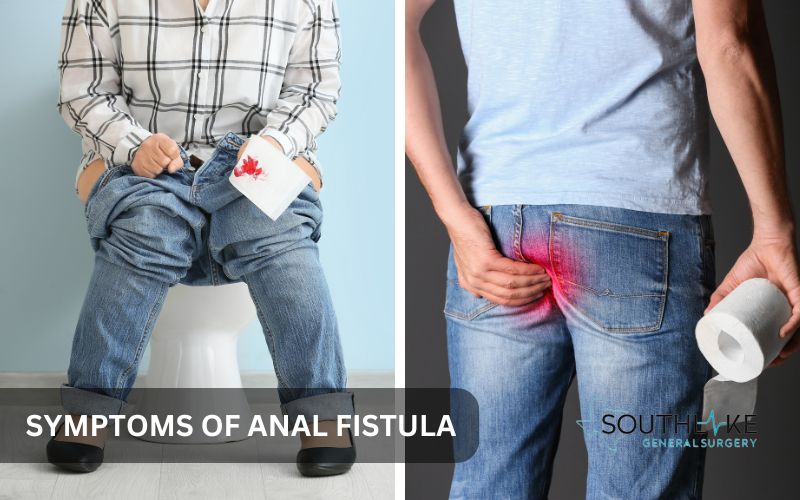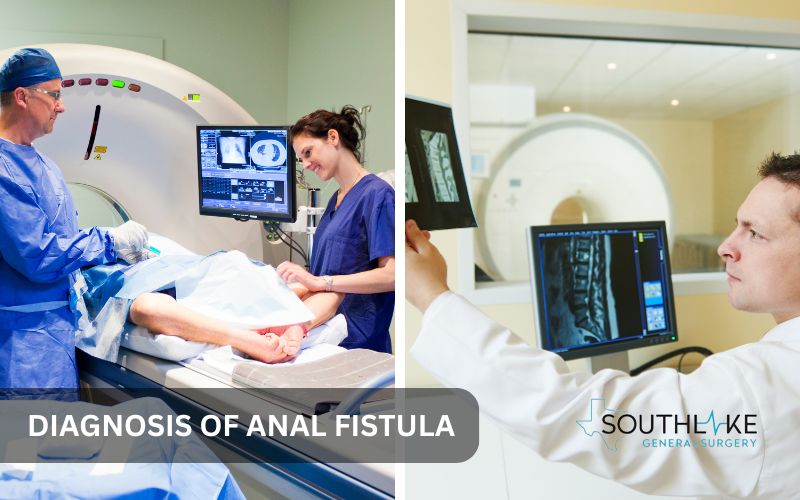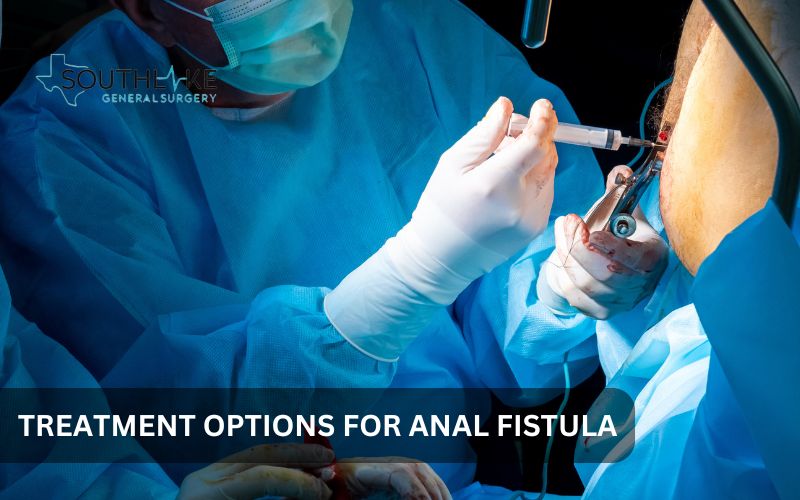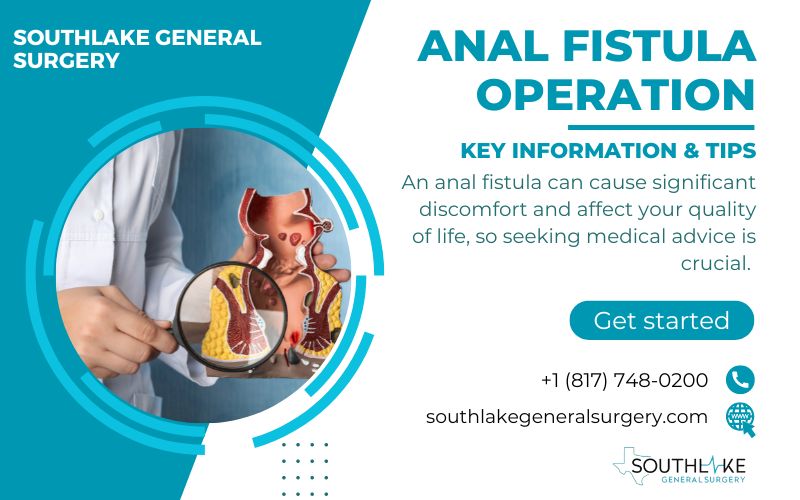An anal fistula operation can be daunting for many. Understanding key information and tips is crucial. Recognize symptoms, consider treatment options like fistulotomy or non-surgical techniques, and focus on post-operative recovery.
This blog will provide comprehensive information about anal fistula operation, including tips for preparing for the surgery and post-operative care.
Anal fistula is a common condition that affects the anus and can cause discomfort and pain. It is important to understand the key information about anal fistula, including its definition, causes, symptoms, and treatment options.
Anal fistula diagnosis includes a thorough physical examination in addition to diagnostic imaging (MRI, ultrasound, etc.) to confirm the diagnosis. These tests help identify the location and severity of the fistula, which is crucial for determining the appropriate treatment approach.
Treatment options for anal fistula range from non-surgical management techniques such as antibiotics and seton placement to surgical procedures like fistulotomy and ligation of the intersphincteric fistula tract (LIFT).
Preparing for anal fistula surgery requires proper preoperative care, including anesthesia and bowel preparation. Post-operative care and recovery involve pain management, wound care, and following the surgeon’s diet and physical activity instructions.
It is important to seek medical advice if you experience symptoms of an anal fistula, as early diagnosis and treatment can prevent complications and promote healing.
Key Highlights
- An anal fistula is an abnormal passageway that develops from inside the anus to the skin outside.
- The most common symptoms of anal fistula include anal pain, swelling, redness, and fluid drainage.
- Diagnostic tests such as MRI and ultrasound can help identify the location and severity of an anal fistula.
- Anal fistula can be treated with either surgical procedures, such as fistulotomy, or non-surgical methods, such as antibiotics and seton insertion.
- Recovery from anal fistula surgery typically takes 3-6 weeks, and post-operative care is essential for proper healing.
- It’s important to seek medical advice if you experience symptoms of an anal fistula, as early diagnosis and treatment can prevent complications.
Understanding Anal Fistula and Anatomy of Anal Fistula
An anal fistula is an abnormal passageway that develops from inside the anus to the skin outside. It usually occurs because of an anal abscess, which is an infected wound that drains pus from the anus.
An anal fistula may develop if the abscess breaks through the anal canal and forms a tunnel inside. The medical term for this condition is a perianal fistula.
The anal canal is the passageway through which stool is eliminated from the body. Two sphincter muscles around it help regulate bowel motions.
The internal sphincter muscle is involuntary and is always contracted to maintain continence. The external sphincter muscle is voluntary and can be contracted or relaxed to control the release of stool.
The anal glands are located in the upper part of the anus, and when these glands become infected, drainage from the infection can create a fistula tract.
An anal fistula may exhibit one or multiple external openings on the skin surrounding the anus. These openings are usually visible as small holes or openings and can be accompanied by symptoms such as pain, swelling, and redness.
Different Types of Anal Fistulas
There are different types of anal fistulas, depending on their location and the path they take. The most common types of anal fistulas include:
- Transsphincteric fistula: This type of fistula extends through both layers of the anal sphincter muscles.
- Intersphincteric fistula: This type of fistula passes through the internal anal sphincter muscle and then burrows out through the space between the internal and external sphincter muscles.
- Suprasphincteric fistula: This type of fistula starts in the anal canal and extends upward, passing through the internal sphincter muscle and then around the external sphincter muscle.
- Extrasphincteric fistula: This less common type of fistula originates from the rectum rather than the anus. It bypasses the anal glands and goes around both the internal and external sphincter muscles.
The complexity of the surgical procedure and the treatment options available for repairing a fistula are both affected by the type of fistula.
Causes and Risk Factors
The development of an anal fistula is often preceded by an anal abscess, which is an infected pocket of pus in the anal area. The infection leads to the formation of a fistula tract as the abscess drains.
Crohn’s disease, a chronic inflammatory condition that affects the digestive tract, is also a common cause of anal fistulas.
Other risk factors for developing an anal fistula include a history of perianal abscesses, frequent bowel movements, and conditions that weaken the immune system. Recurrence of anal fistulas can be prevented by treating these underlying conditions.
Common Causes of Anal Fistula
An anal abscess is the most typical reason for an anal fistula to form. An anal abscess is a pus-filled pocket that develops in the anal region due to infection. The infection can occur due to various reasons, such as a blocked anal gland or an infection spreading from the nearby skin. If the abscess is not treated properly, it can lead to the formation of a fistula.
Crohn’s disease, a chronic inflammatory bowel disease, is another common cause of anal fistulas. In this condition, the immune system mistakenly attacks the digestive tract, causing inflammation and ulcers. These ulcers can lead to the formation of fistulas.
Other causes of anal fistulas include anorectal abscesses (infection in the anal or rectal area) and frequent or prolonged bowel movements, which can irritate the anal area and increase the risk of infection.
Risk Factors for Developing an Anal Fistula
Certain factors can increase the risk of developing an anal fistula. There are certain conditions, such as Crohn’s disease, which can lead to chronic inflammation and the development of ulcers in the digestive tract.
Crohn’s disease increases the risk of developing anal fistulas as it weakens the tissues in the anal area and makes them more susceptible to infection.
Another risk factor is the presence of anal abscesses, which are often a precursor to fistulas. Chronic or recurring anal abscesses can lead to the formation of fistulas.
Frequent or prolonged bowel movements can also increase the risk of developing anal fistulas, as they can irritate the anal area and lead to infection.
Additionally, having a history of anal fistulas or previous anal surgery can increase the risk of recurrence.
Symptoms of Anal Fistula

The symptoms of an anal fistula can vary depending on where it is located and how complex it is. The most common symptoms include anal pain, which can be intense and throbbing, especially during bowel movements.
Other symptoms include swelling and redness around the anus, which indicates inflammation, and fluid drainage from the anal area. The drainage may include pus, blood, or a foul-smelling discharge.
Some people may also experience fecal incontinence, which is the inability to control bowel movements. The symptoms of an anal fistula can be disruptive and affect a person’s quality of life, so it’s important to seek medical advice for proper diagnosis and treatment.
Identifying Symptoms of Anal Fistula
Identifying the symptoms of an anal fistula is important for prompt diagnosis and treatment. The most common symptoms include anal pain, which can be severe and may worsen during bowel movements, coughing, or sitting.
The pain is often accompanied by swelling and redness around the anus, indicating inflammation.
Another common symptom is the presence of discharge from the anal area, which can be pus, blood, or a foul-smelling fluid. Some people may also have trouble holding in bowel movements or have episodes of fecal incontinence.
It’s important to note that the symptoms of an anal fistula can vary depending on the location and complexity of the fistula, so it’s important to seek medical advice for a proper diagnosis.
When to Seek Medical Advice
If you observe any indications of an anal fistula, it is imperative to seek guidance from a medical professional to obtain a precise diagnosis and receive the essential treatment.
It is recommended to consult with a medical professional if you experience any of the following symptoms:
- Persistent anal pain that worsens during bowel movements or affects your daily activities.
- Swelling and redness around the anus that doesn’t improve or worsen over time.
- Drainage from the anal area, such as pus, blood, or foul-smelling fluid.
- Difficulty holding in bowel movements or episodes of fecal incontinence.
- Fever, which can indicate an infection.
- Persistent discomfort or a feeling of heaviness in the anal area.
Seeking medical advice allows a healthcare professional to evaluate your symptoms, diagnose the underlying cause, and recommend appropriate treatment options for your anal fistula.
Diagnosing Anal Fistula

To diagnose an anal fistula, a healthcare provider will conduct a physical exam and may use imaging tests to evaluate the location and extent of the fistula.
The physical exam involves examining the anal area for signs of inflammation, swelling, and discharge. They may also use a tool called an anoscope to examine the anal canal and identify the internal opening of the fistula.
Imaging tests, such as MRI (magnetic resonance imaging) or ultrasound, may be used to visualize the fistula tract, internal opening, and surrounding structures. These tests provide detailed images, allowing the healthcare provider to assess the complexity of the fistula and plan appropriate treatment.
In some cases, a healthcare provider may use hydrogen peroxide to identify the internal opening of the fistula by observing the response to the peroxide, such as the formation of bubbles or foam.
Role of Imaging in Anal Fistula Diagnosis
Imaging tests, such as MRI (magnetic resonance imaging) and ultrasound, play a crucial role in the diagnosis of anal fistulas.
These tests provide detailed images of the fistula tract, internal opening, and surrounding structures, helping healthcare providers determine the extent and complexity of the fistula.
MRI is particularly useful in visualizing the fistula tract, as it provides high-resolution images that can show the entire path and any branching channels.
Ultrasound is another imaging technique that can be used to evaluate the fistula and identify the internal opening.
Both MRI and ultrasound help healthcare providers plan the appropriate treatment strategy by providing valuable information about the anatomy of the fistula and its relationship to the surrounding tissues.
Treatment Options for Anal Fistula

The treatment options for anal fistula include both surgical and non-surgical approaches. The choice of treatment depends on the severity, complexity, and location of the fistula.
Surgical options include procedures like fistulotomy, which involves cutting the fistula open and allowing it to heal from the inside out.
Another surgical option is the LIFT procedure (ligation of the intersphincteric fistula tract), in which the fistula tract is closed off using stitches.
Non-surgical management techniques include the use of setons (thin surgical threads) to promote drainage and healing. Antibiotics and other medications may also be prescribed to treat any infection associated with the fistula.
It is important to consider individual factors and consult with a healthcare provider when determining the appropriate course of treatment.
Non-Surgical Management Techniques
Non-surgical management techniques may be considered for certain cases of anal fistulas. These techniques aim to control infection, promote healing, and reduce symptoms.
The prescription of antibiotics is often necessary to address any infection related to the fistula. Fibrin glue, a special adhesive substance, can be injected into the fistula to seal it and promote healing.
Setons, thin surgical threads, may be inserted into the fistula to promote drainage and prevent closure. This facilitates the eradication of the infection and promotes the healing of the fistula from within.
Drainage techniques may also be utilized to relieve symptoms and facilitate healing. Non-surgical management techniques are often used as a temporary measure or as part of a comprehensive treatment plan for anal fistulas.
Surgical Treatment of Anal Fistula
Surgical options are commonly used to treat anal fistulas, especially if non-surgical management techniques are ineffective or not suitable. The selection of the surgical procedure is determined by the complexity and placement of the fistula.
A fistulotomy is a frequently performed surgical procedure where the entire fistula tract is incised and allowed to heal internally. The LIFT procedure (ligation of the intersphincteric fistula tract) is a surgical technique that effectively closes off the fistula tract using stitches.
Another surgical option is ligation of the intersphincteric fistula tract (LIFT), which involves closing off the tract between the sphincter muscles.
In more complex cases, a flap procedure may be performed, in which healthy tissue is used to cover the fistula and promote healing. The choice of surgical procedure is determined by the surgeon based on individual factors and the characteristics of the fistula.
Latest Advances in Anal Fistula Surgery
Advancements in anal fistula procedure have led to the development of new techniques and approaches for the treatment of this condition. One such advancement is the LIFT procedure (ligation of the intersphincteric fistula tract), which has gained popularity in recent years.
This procedure involves closing off the fistula tract using stitches, which helps promote healing and reduce the risk of complications such as incontinence.
Another advancement is the use of fibrin glue, a special adhesive substance, to seal the fistula and facilitate healing.
These advancements in surgical techniques and materials have resulted in improved outcomes for patients with anal fistulas, providing more effective and less invasive treatment options.
Preparing for Anal Fistula Surgery
Before undergoing an anal fistula surgery procedure, several important steps need to be taken to ensure a safe and successful outcome. Preoperative care typically includes a thorough evaluation of the patient’s medical history, physical examination, and any necessary diagnostic tests.
Anesthesia options will be discussed with the patient, and the most appropriate type of anesthesia will be determined based on the individual’s health status and the complexity of the surgery.
Bowel preparation may be necessary to ensure that the bowel is empty and clean before the surgery. This may involve dietary restrictions and the use of laxatives or enemas.
Adhering to the preoperative instructions given by the healthcare team is crucial for maximizing the success of the surgery.
What to Expect Before Surgery
Before anal fistula surgery, patients can expect to undergo several preparations. This involves discussions with the healthcare team regarding the specific anesthesia employed during the surgical procedure.
Patients will also be advised on the importance of bowel preparation, which often involves fasting and the use of laxatives or enemas to empty the intestines. Patients will receive instructions on the duration of fasting prior to the surgery and the specific dietary restrictions that need to be followed.
Before the surgery, patients will be required to provide their informed consent after being fully informed about the procedure, associated risks, and expected outcomes.
Patients need to follow the healthcare team’s instructions carefully to ensure the surgery’s success and minimize any potential complications.
How to Prepare for Your Operation
Preparing for anal fistula surgery involves several steps to ensure a smooth and successful operation. Bowel preparation is typically required to clean the bowels before the surgery.
This may involve following dietary restrictions, drinking plenty of fluids, and taking laxatives or enemas as directed by the healthcare team.
Patients may also need to adjust their medication regimen prior to the surgery, especially if they are taking blood thinners or other medications that may interfere with the procedure.
Hygiene is also an important aspect of preparation, as patients will need to clean the anal area thoroughly before the surgery.
Following the healthcare team’s instructions regarding bowel preparation, dietary restrictions, medication management, and hygiene practices is crucial for a successful operation and optimal post-operative recovery.
Post-Operative Care and Recovery
After anal fistula surgery, post-operative care and recovery are essential for optimal healing and a successful outcome. This includes pain management to control any discomfort or pain experienced after the surgery. Patients will be prescribed pain medication and given instructions on how to take it.
Wound care is also important to prevent infection and promote healing. Patients will receive guidance on how to clean and dress the surgical wound, as well as any specific wound care instructions.
Additionally, patients may be advised to take certain precautions and avoid activities that could strain the surgical area during the recovery period.
Following the healthcare team’s post-operative care instructions and attending any follow-up appointments is crucial for a smooth recovery from anal fistula surgery.
Immediate Post-Operative Care
Immediate post-operative care following anal fistula surgery focuses on pain management, wound care, and preventing complications. Patients will be prescribed pain medication to manage any discomfort or pain experienced after the surgery.
Ensuring proper wound care is important for preventing infection and facilitating the healing process. This may involve cleaning the surgical wound with mild soap and water, applying an antibiotic ointment, and covering it with a sterile dressing.
In some cases, patients may be prescribed antibiotics to reduce the risk of infection. Follow-up appointments will be scheduled to monitor the healing process and ensure that the surgical site is healing properly.
Patients need to adhere to the post-operative care instructions provided by the healthcare team to optimize their recovery and minimize the risk of complications.
Long-Term Recovery and Care
Long-term recovery and care after anal fistula surgery involve several considerations to ensure a successful outcome. Patients should expect a gradual recovery process, with the complete healing of the surgical site taking several weeks to months.
It is important to follow the healthcare team’s instructions regarding wound care, pain management, and any restrictions on physical activity during the recovery period. Patients may be advised to avoid heavy lifting or strenuous physical activity that could strain the surgical area.
Maintaining good hygiene and following a healthy diet can also contribute to long-term recovery and overall well-being. It is important to communicate any concerns or changes in symptoms to the healthcare team during the recovery phase to ensure prompt intervention if needed.
Conclusion
In conclusion, understanding anal fistulas, their causes, symptoms, and treatment options is crucial for making informed decisions about your health. Seeking medical advice promptly can lead to timely interventions and better outcomes.
Whether considering non-surgical or surgical management techniques, it’s essential to be well-prepared for the process, both before and after the operation.
Remember, post-operative care and recovery play a significant role in your overall well-being. If you have further questions or need guidance, do not hesitate to get in touch with medical professionals for personalized advice and support. Your health is a priority.
Make an Appointment
If you are experiencing symptoms of an anal fistula or have been diagnosed with this condition, it is important to make an appointment with our healthcare expert at +1 (817) 748-0200, for proper evaluation and treatment.
An anal fistula can cause significant discomfort and affect your quality of life, so seeking medical advice is crucial.
During the appointment, the healthcare provider will assess your symptoms, perform a physical examination, and may order further diagnostic tests to determine the best course of treatment for your specific condition.
They can provide you with the necessary information and guidance to manage your anal fistula effectively and improve your overall well-being.
Frequently Asked Questions
What is an anal fistula and why might surgery be necessary?
An anal fistula is a small passage that forms between the anal canal and the surrounding skin near the anus. Surgery may be necessary to treat anal fistulas that are recurrent, complex, or cause severe symptoms like pain, swelling, or discharge. It aims to remove the fistula tract and promote healing.
How Successful Is Anal Fistula Surgery?
The success rate of anal fistula surgery depends on various factors, including the type and complexity of the fistula, the surgical technique used, and individual patient factors. Overall, anal fistula surgery has a good success rate, with most patients experiencing complete healing and resolution of symptoms.
However, like any surgical procedure, there is a slight chance of complications, including incontinence or the fistula recurring. The specific success rate and risk of complications can vary depending on the individual case, and it is important to discuss these factors with your healthcare provider.
How long is the recovery period after an anal fistula operation?
The recovery period after an anal fistula operation can vary depending on the individual and the complexity of the surgery. In general, it takes several weeks to months for the surgical site to heal completely. During this time, it is important to follow post-operative care instructions, take prescribed medications, and attend follow-up appointments.
Returning to normal activities will depend on the specific recommendations of the healthcare provider. It is important to have realistic expectations and allow your body enough time to heal and recover fully before resuming normal activities.
Medically Reviewed By: Dr. Valeria Simone MD
Board-certified General Surgeon at Southlake General Surgery, Texas, USA.
Follow us on Facebook and YouTube.
References:
- Geltzeiler, Cristina B., et al. “Recent developments in the surgical management of perianal fistula for Crohn’s disease.” PubMed Central (PMC), 2014, www.ncbi.nlm.nih.gov/pmc/articles/PMC4188928.
- Jimenez, Mercy, and Nageswara Mandava. “Anorectal Fistula.” StatPearls – NCBI Bookshelf, 2 Feb. 2023, www.ncbi.nlm.nih.gov/books/NBK560657.
- Dorosh, James, and Judith C. Lin. “Aortoenteric Fistula.” StatPearls – NCBI Bookshelf, 26 Sept. 2022, www.ncbi.nlm.nih.gov/books/NBK567729.
- Dudukgian, Haig, and Herand Abcarian. “Why do we have so much trouble treating anal fistula?” World Journal of Gastroenterology, vol. 17, no. 28, Jan. 2011, p. 3292. https://doi.org/10.3748/wjg.v17.i28.3292.
- Hansen, Melina Svraka, et al. “Efficacy of Plug Treatment for Complex Anorectal Fistulae: Long-term Danish Results.” Annals of Coloproctology, vol. 35, no. 3, June 2019, pp. 123–28. https://doi.org/10.3393/ac.2018.07.14.
- Bertelson, N. L., et al. “Diverticular colovesical fistula: What should we really be doing?” Techniques in Coloproctology, vol. 22, no. 1, Dec. 2017, pp. 31–36. https://doi.org/10.1007/s10151-017-1733-6.

